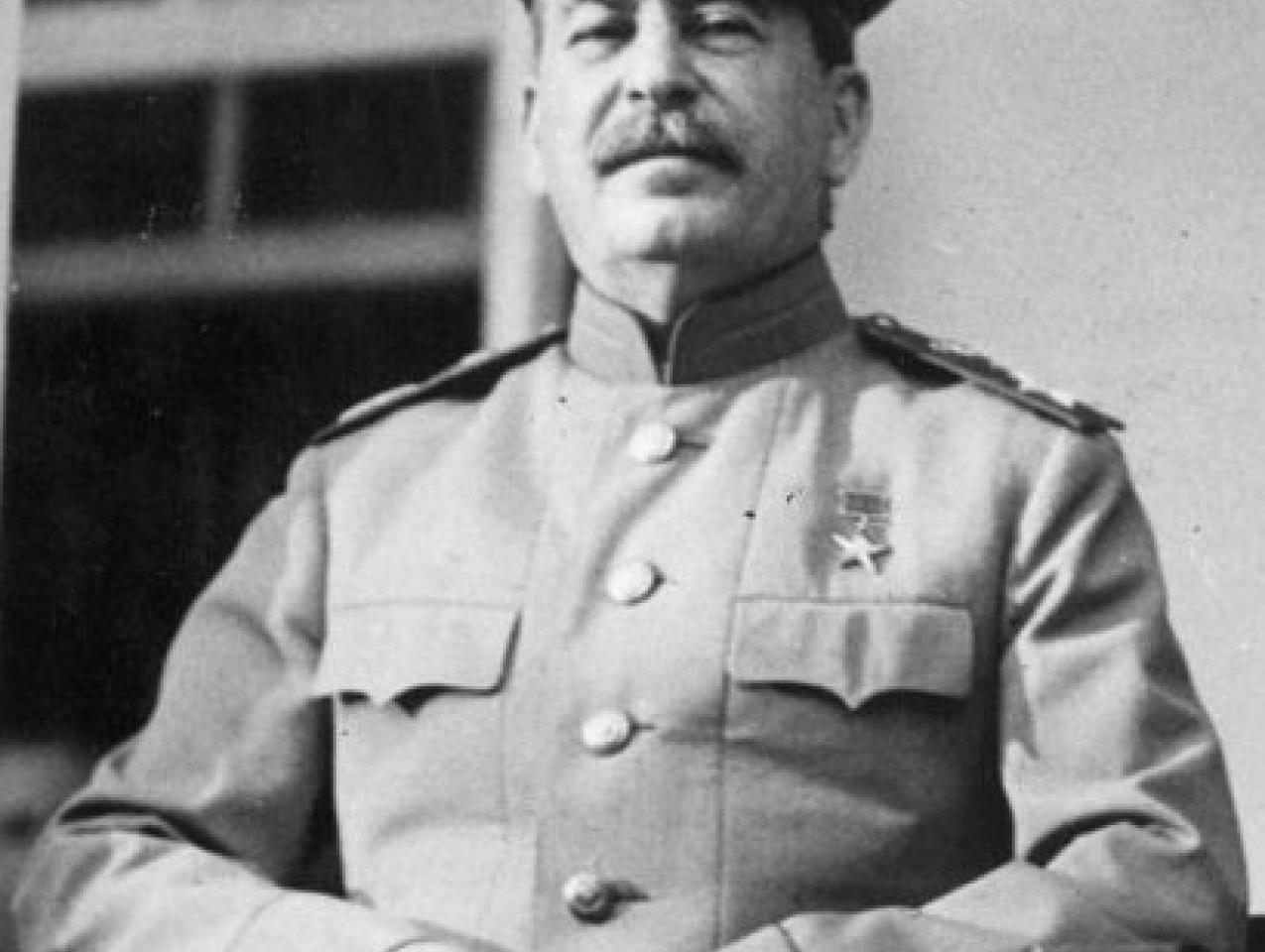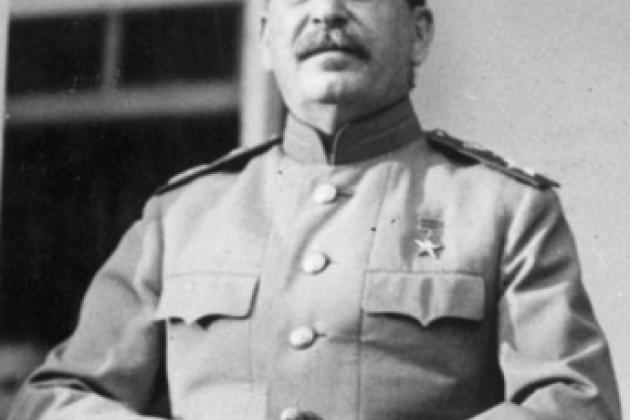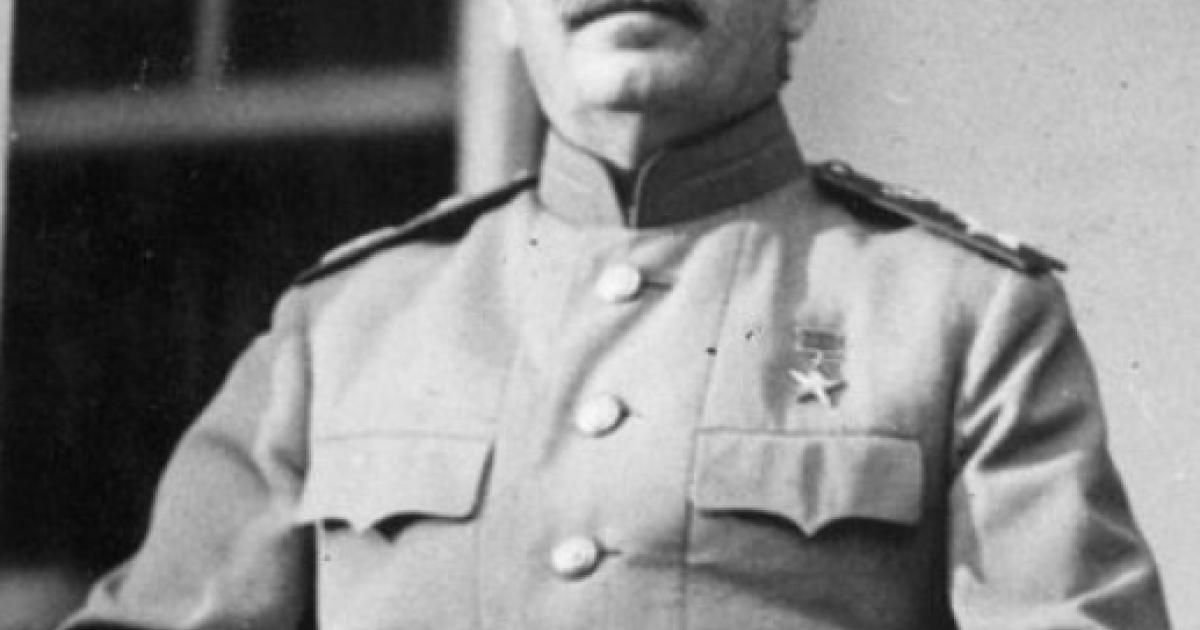The British historian E. H. Carr wrote that history is a dialogue between past and present. These past fourteen months of war in Ukraine have caused me to think more and more about Vladimir Putin in the mirror of Josef Stalin, and Stalin in the mirror of Putin. I resisted for a very long time the notion that Putin was a Stalin-like figure. However, the similarity between the two of them, the historical dialogue, has seemed to be growing too powerful to be pushed aside.
I have lived in Putin’s prewar Russia. I’ve worked in the archives of the state and party and talked to friends openly about the pluses and minuses of the regime—a freedom unthinkable in Stalin's time or even today. Three of my books were published in Russian by a small, friendly publishing outfit, all of them openly critical of important parts of Soviet history. Not only did I function well in Moscow—and my stays were mostly in Moscow—but I liked being there, speaking Russian, going to comfortable coffeehouses and restaurants, and watching biased but sometimes interesting television programs.
I had my hopes up for a better Russia. Sometimes those hopes would be squelched by current events, but I still felt that one fine day the good guys would win. The end of the Soviet system in 1991 was crucial. By the turn of the century, I was ready for that new day to dawn.
Insistent Parallels
I should add that in addition to reading and watching video of Putin’s speeches and interviews, I saw him in action at a meeting of the Valdai Discussion Club, a Moscow-based think tank, in Sochi. I confess I was impressed by his ability to speak cogently and comprehensively for hours about a wide variety of questions. Not that I necessarily agreed with what he said—but he was a forceful speaker, sure of himself and confident, but also subtle and not without a sense of humor. He was surely better on his feet dealing with questions than most US presidents I have seen in similar situations. He was much better at public speaking and interviews than Stalin, who could be a deadly boring orator and whose interviews were clipped and predictable, though by no means unintelligent.
Stalinist Russia was a scary, bleak place. The terror and purges swept up millions of people. Of course, the population managed to find enjoyment in life, dancing to new and fashionable swing bands, going to corny movies, and reveling in a newly emerging consumer culture that was particularly notable in the immediate post–World War II period. But still: the sheer weight of the Gulag, the executions, the torture, the mass murders, the deportations, and the fear—all promoted by the all-powerful and fearsome leader—were something quite different from the Russia I enjoyed visiting.
But Stalin and Putin have many of the same characteristics, starting with their shared role as leaders of Russia at war. Putin does not wear a military uniform or pose as a generalissimo, but both he and Stalin project powerful images of being in control, even when they may not be, of knowing what they are doing (even when they don’t), of leading their respective armies, and of honoring the service of their military subordinates. They both routinely replace generals who fail to produce victories and rebuke subordinates who fail to supply the military what it needs in men and materiel. Putin’s injunctions to military valor resonate with Stalin’s own wartime appearances before the people and the troops. The motifs of sacrifice for the fatherland and the honor of shedding blood for the greater good of the Russian people loom large with both.
Putin put up a statue of Stalin in Volgograd for the anniversary of the 1942–43 Battle of Stalingrad, renamed the city Stalingrad for a day, and praised Stalin as a great military leader. I also recall that when Putin spoke at the 2017 dedication of a memorial for victims of terror, Stalin was not mentioned at all. Stalin is the symbol of victory in the war—and of a powerful state.
Both Putin and Stalin use the non-Russian peoples of Russia/Soviet Union as cannon fodder. Both pay little if any attention to the actual loss of life and casualties at the front. Part of this clearly has to do with the way Russians fight wars, but it also has to do with the leaders themselves, and their lack of concern for minimizing casualties. We could add to this other parallels between the way Stalin fought World War II and Putin the war in Ukraine: the heavy use of artillery and tanks, the attempts to wear down the enemy with updated trench warfare, and the bombardment of civilian targets as if they were the same as military objectives.
The war crimes and crimes against humanity committed today by Russian troops in Ukraine are reflected in the Soviet World War II advances against the Germans in Eastern Europe, in Germany, and in Berlin, the heart of the beast itself, as Soviet posters portrayed it. Regardless of one’s justified contempt for the Nazi regime, it’s worth remembering the hundreds of thousands of raped German women and girls, the innocent German civilians who were attacked and murdered as they tried to escape the Soviet advance, and the widespread pillaging of food, household goods, and other property, all of which have also been widely reported in Ukraine.
This, of course, is not necessarily the direct result of Putin’s or Stalin’s leadership. But it is the indirect result. Neither seems to exhibit much empathy or pity for their enemies or innocent victims. Neither develops policies that might limit damage to schools, hospitals, or maternity wards, much less the civilian housing complexes that get destroyed in indiscriminate bombing and shelling. Both are intensely aware of how important shaping the Russian side of the story—really, the PR about the respective wars—is to public support for the war and their political objectives. They both use religion and the church to bless their military campaigns. Religious, cultural, and historical motifs combine with political ones.
Ideological War
Neither Stalin nor Putin invented Russian “military-patriotic education,” but both rely on its tenets—martial bearing, nationalism, patriotism, athletic prowess, and the use of weapons—to promote the military among Russian youth, men, and women. Youth in particular are the objects of intense training and the inculcation of militarist characteristics, such as incessant saluting, following orders, marching in step, and not questioning authority.
Another part of this Stalin-Putin story is their respective thinking about the Soviet/Russian empire and Ukraine. Both adhere to the proposition that Ukraine is integral to the strength of empire, be it Soviet or Russian. Yet to both Stalin and Putin, Ukraine is the little brother, “Little Russia,” as it was known under the czars. Russians should see themselves as superior to Ukrainians: bigger, stronger, more powerful, more central to the imperial project than the Ukrainians.
But Ukrainians are not Russians and do not want to be Russians. That is precisely why they are dangerous for Moscow. Especially after the forcible incorporation of Western Ukraine in 1945, they pulled towards the West. But even in a previous era, the period of the Holodomor, the death famine of 1932–33, Stalin constantly asserted that the Poles would use the Ukrainians to destroy the Soviet Union. Putin now claims that Ukraine is being controlled by the West, that the leaders are nothing but marionettes of the United States.
Putin’s accusation is remarkably similar to the language Stalin used to talk about Polish ambitions in Ukraine. Then, the Ukrainians were all “Petliurites”—after Symon Petliura, who had been a major figure in trying to establish an independent Ukrainian state during the Russian Civil War. Now the Ukrainians, in addition to being called Nazis, neo-Nazis, and fascists, are “Banderites”—followers of Stepan Bandera, who had an on-again, off-again relationship with the Nazis during World War II in the name of founding an independent Ukraine.
Interesting, too, is the psychological reaction of both Putin and Stalin to the Ukrainians. The Ukrainians are ungrateful turncoats, people who refuse to admit how much the Russians had done for them, how they had been protected and nurtured by Moscow. Only to turn on their big brothers!
Stalin and Putin’s views of history also harmonize. In their shared view, the medieval princedom of Kyivan Rus was Russian, not Ukrainian. The 1654 treaty of Pereyaslav demonstrated the readiness of the Russian empire to protect the Ukrainians against their Polish enemies. It was certainly not an agreement between equals with mutual benefits, as the Ukrainians assert. And for both Stalin and Putin, the Holodomor was not genocide at all. Stalin denied the existence of an all–Soviet Union famine altogether, while Putin admits there was a famine but not that Ukraine suffered in particular. For both Stalin and Putin, World War II was above all a victory of the Great Russian People. Ukrainians may have fought bravely, but there were too many Banderites who sullied the reputation of the Ukrainians in the war.
Private and “Pitiless”
Finally, the biographies of Stalin and Putin have some eerie similarities. Both had hardscrabble, lower-class backgrounds. Stalin had a religious background; Putin did not, though he seems, maybe genuinely, to have taken up Orthodoxy in recent years. Both rose to prominent positions by being responsible bureaucrats, Putin in Anatoly Sobchak’s Leningrad city organization, Stalin in the early Bolshevik party (in which, recent biographies have made clear, he was more than the messenger boy described by Trotsky).
In their rise to supreme power, both maneuvered skillfully to oust opponents and potential rivals. Both were effective in internal political wrangling. Stalin murdered many tens of thousands of real and potential opponents. Putin may well have been behind the murder of a number of his; the scale is clearly very different. But he would agree with Stalin's justification: “The state demands that we are pitiless.”
Both leaders are intensely private, revealing little of their family lives. Both seem to be friendless. Both have a security mania and are generously endowed with streaks of paranoia and fear regarding the people around them, as well as the outside world.
Both leaders relied heavily on the Russian secret police in their rise to power and in maintaining their supreme positions. Stalin had his OGPU and NKVD, Putin the KGB and the FSB. Stalin himself was not a secret policeman, as was Putin, but he might as well have been. Both understood the power of the Chekist “Sword and Shield” to control all of society. According to Andrei Soldatov, a Russian émigré investigative journalist, Putin has used the FSB to solidify his position in occupied Ukraine, as well as internally. Similarly, Stalin used the NKVD to help him control Eastern Europe, as well as the Soviet Union.
In the end, both Stalin and Putin are essentially realists in their foreign policy. They both have ideological lenses through which they see the world, but ultimately they perform a careful weighing of national interest. And they see the pursuit of that national interest as forwarding their own interests.
Stalin and Putin make mistakes. Stalin’s was in thinking that Hitler would not attack. Putin’s biggest mistake, in my view, was attacking Ukraine. Their calculations can be seen as tainted by paranoia, fearfulness, and xenophobia—imbalances, in short, that made clear-eyed realism impossible.

















